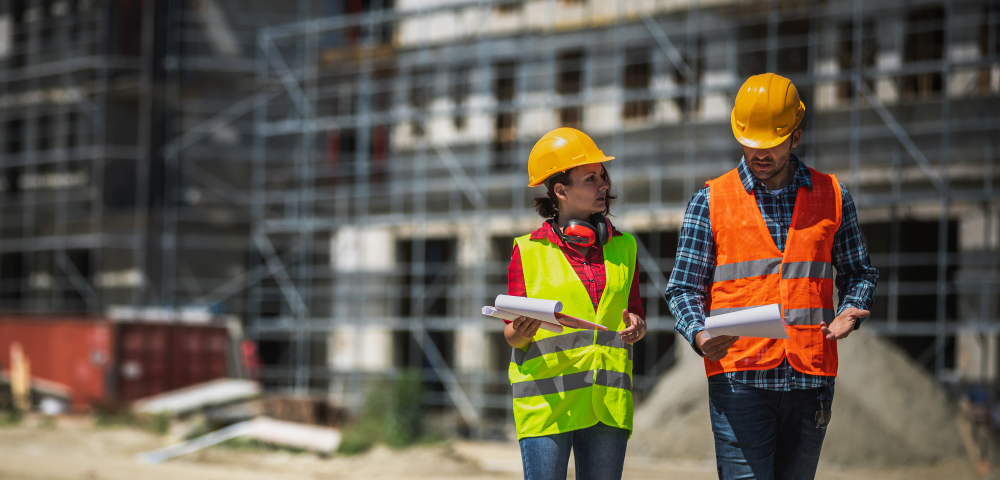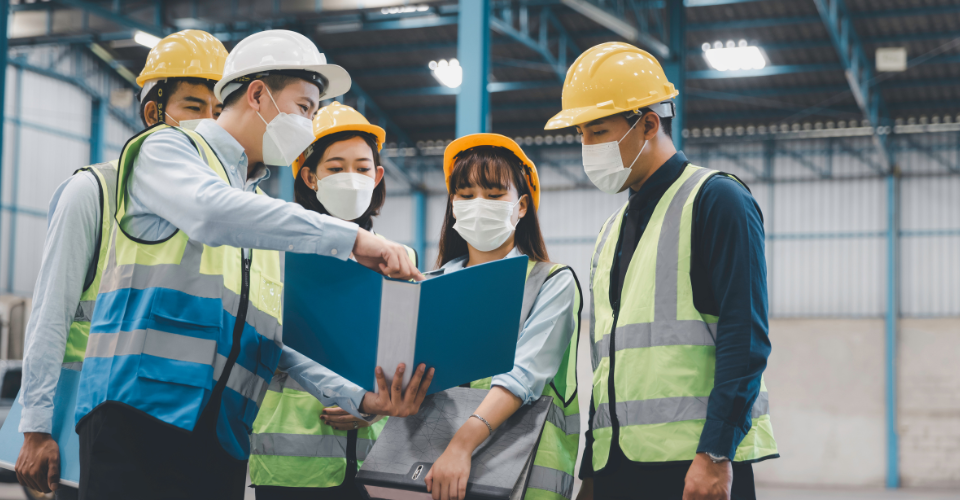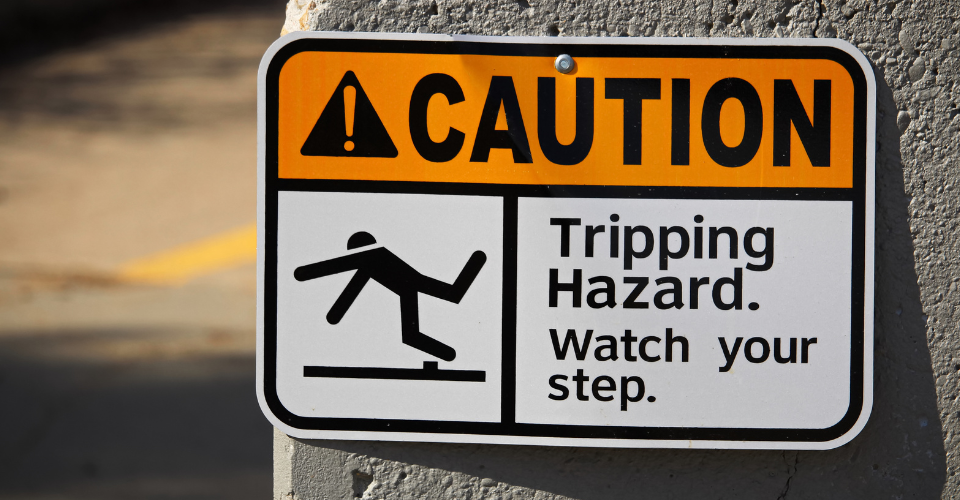Construction Risk Assessment: How to Get it Right in the High-Risk World of Construction

Key Takeaways:
- More Than Compliance: Construction risk assessments aren’t just a legal requirement – they’re a crucial framework for identifying, assessing, and controlling risks that could affect workers, visitors, and the public.
- Continuous Process: Effective risk assessment requires regular reviews and updates to ensure control measures in place are followed and continue to be effective.
- Collaborative Approach: Successful risk assessments rely on worker involvement, professional expertise, and clear communication to build a strong safety culture across construction sites.
What is a Construction Risk Assessment?
A construction risk assessment is a structured walk-through of potential hazards and risks on a construction site. It’s more than just box-ticking, it’s a framework to identify, assess and control the risks that could affect workers, visitors and the public. It needs to be thorough, documented and reviewed regularly to remain effective.
You need to review a site risk assessment to ensure relevant risk mitigation (control) measures are implemented and no further risks or hazards have arisen prior to works starting.
Legal Requirements and Responsibilities
The Management of Health and Safety at Work Regulations require every employer to prepare a suitable, and sufficient, risk assessment. The person completing the risk assessment must be competent to prepare out risk assessments and the employer must ensure that records are kept, control measures are implemented and risk assessments are subject to regular review.
The Assessment Process
The risk assessment process starts with hazard identification through a methodical site walk. This includes looking at the physical site conditions, work activities and processes, equipment and machinery, environmental factors and access points.
Once you have identified the hazards you must evaluate each one based on the likelihood of occurrence and the potential severity of the consequences. Reviewing accident records will help to determine the probability of an accident occurring and its potential consequences. Accident records will also identify any key control measures in place and confirm ongoing suitability. This must consider who could be affected and what controls are already in place. The assessment isn’t complete until you have developed and implemented the controls.
Documentation and Review
Keeping good records is key to good risk management. Your records should include the hazards identified, risk ratings, controls, review dates and any incident reports. This will be a useful reference for future assessments and prove compliance with regulatory requirements.
Building a Safety Culture
Risk assessment relies heavily on worker involvement. Experienced workers have valuable knowledge of potential hazards and practical controls. Regular training and open conversation about safety issues helps create a culture where safety is everyone’s responsibility.
Clear communication is key to this. Assessment findings and controls must be communicated in simple language. Visual aids can help with sites with diverse workforces.
“Common barriers to safety compliance on sites include production pressures, inadequate planning, cost constraints, lack of skilled labour, and insufficient competent supervision. There’s often an expectation for contractors to assume full responsibility, reducing accountability for the Principal Contractor. Time constraints also lead to shortcuts, such as skipping proper equipment for tasks perceived as quick jobs.”
-Eleanor Eaton, Managing Director at CQMS
Common Challenges
Time is often the biggest challenge in construction risk assessment. The key is to have efficient assessment systems and systems and use tools and equipment to aid the work activity. Site conditions can change quickly in construction so you need flexible assessment frameworks that can adapt to new situations without compromising control measures.
Worker resistance to safety measures can be another obstacle. The solution is to build a safety culture through active engagement with all workers alongside regular training and communication of the purpose and subsequent benefits. When workers understand how the safety measures protect them, they will engage with the process.
Identifying Hazards on Site
Identifying hazards on site is a key part of the risk assessment process. Hazards can include working at height, work equipment, manual handling, slips, trips and falls or exposure to hazardous substances. To identify these hazards a thorough site inspection should be done, involving all workers and stakeholders in the process. This collaborative approach will ensure all risks are identified and managed, creating a safer environment for everyone.
Professional Support Makes a Difference
While your internal team can do the routine assessments, professional consultants bring expertise to the process. They offer independent perspective, up-to-date regulatory knowledge and best practice guidance. This external expertise is particularly valuable for complex projects or unique safety issues.
Risk assessment in construction requires commitment, expertise and a process. When done correctly it’s not just about compliance but also about project efficiency and success. Regular reviews and updates will keep your process relevant and effective, protect your workforce and your projects.
Need Help?
At CQMS we understand the complexities of construction risk assessment. Our team of health and safety consultants can provide you with site-specific assessments or ongoing support. We work with you to develop practical solutions that protect your workforce and support project success.
Frequently Asked Questions
- What is a Construction Risk Assessment?
A construction risk assessment is a process to identify, evaluate and control hazards in the workplace. This is a critical step to protect construction workers and the public who may be affected by the project. By identifying potential hazards, assessing the likelihood and severity of the risks and implementing controls a construction risk assessment will mitigate or eliminate the risks. This proactive approach will save lives and support project success and efficiency.
- Who does the Risk Assessment?
The responsibility for the risk assessment lies with the employer. The person completing the risk assessment must be competent to prepare the risk assessments and must ensure the risk assessments is completed with relevant control measures implemented to mitigate or eliminate the risks.
- What Are the Different Types of Risk Assessments
In construction there are different types of risk assessments for different aspects of safety:
- Generic Risk Assessments; these risk assessments look at the hazards and risk involved in a task or work activity. They are often used at different locations where the task is the same (or similar) and updated to include any location or task specific information.
- Site-Specific Risk Assessments; these risk assessments are essential on a construction site as they are carried out for a specific activity and location and are bespoke to a project including any client specific requirements. Often the generic risk assessments are used as a foundation for site-specific risk assessments.
- Dynamic Risk Assessments; these risk assessments are used when the circumstances change and provide a proactive approach the management of the risk. A dynamic risk assessment will continually evolve and adapt as changes occur on site.
Each type of risk assessment has its part to play in a safe construction environment, managing the hazards as they happen.





